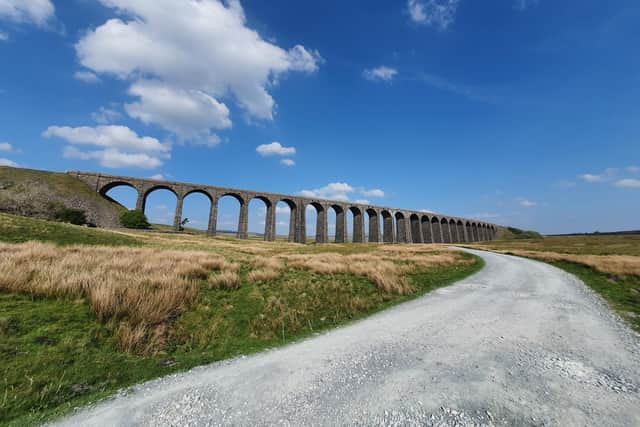State-of-the-art technology to give drivers better weather information in North Yorkshire
North Yorkshire County Council has introduced the state-of-the-art technology to provide data on the prevailing weather conditions over some of the highest roads in the region.
The network of 10 weather stations, which have been provided by Vaisala, a global technology leader in weather measurements, can be found on remote roads such as the B6255 at Ribblehead, a vast area of moorland at the head of the River Ribble with the famous peaks of Ingleborough and Whernside in view.
Advertisement
Hide AdAdvertisement
Hide AdThe council’s executive member for highways, Coun Don Mackenzie, said: “North Yorkshire has some of the most challenging and remote routes in England in the winter as many of our roads pass over the high ground of the Yorkshire Dales as well as the North Yorks Moors, and this can make travelling treacherous at times.


“Our winter gritting fleet works highly effectively throughout the winter, but despite our best efforts the weather can change dramatically for the worst in these remote routes and so accurate information about road conditions is essential to inform and keep the travelling public as safe as possible.
“With the data and images provided by these weather stations we hope the public will be able to make more informed, safer, journey choices during the winter period.”
The new sites, which cost about £20,000 each, are equipped with solar-powered cameras and images will be displayed on the council’s website, allowing the public to see road conditions before starting out on journeys.
Advertisement
Hide AdAdvertisement
Hide AdUntil now, highways officers have not been able to run cameras from solar-powered sites, but technologies have improved over the past few years to allow them to do this.
In winter, the snow can sweep in rapidly and conditions for travelling deteriorate quickly.
Another weather station sited in Craven is on the A6068 at Cowling Moss, a route which climbs between Crosshills and Colne across the hills of the Pennines.
There is also a station on the C20 at Blakey Ridge which runs up towards Teesside across the windswept heath of the North York Moors and is regularly snowed over in winter with the council’s farmer contractors having to dig motorists out of sudden snowdrifts. Another station is at the Hole of Horcum on the A169, which winds across moorland between Pickering and Whitby.
Advertisement
Hide AdAdvertisement
Hide AdThe council’s contract with Vaisala spans more than 30 years, and has involved employing thermal mapping, data management and maintenance services.
However, the wide-ranging programme to upgrade technology means the council now has the largest network of RWS200 weather stations of any local authority in the UK.
The weather stations form yet another element in the council’s armoury to battle against the harsh wintry conditions that affect the county’s vast uplands.
The county council spends between £6m and £10m each year on gritting, depending on the severity of the weather during the winter months.
It has a fleet of 80 gritters to serve its 5,800-mile network of roads, along with more than 100 farmer contractors.